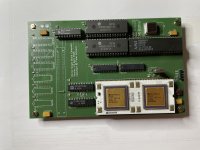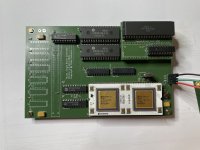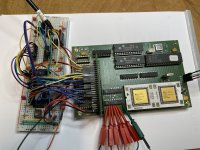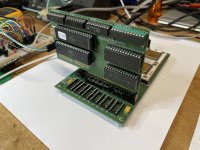cbscpe
Experienced Member
Not really satisfied with my breadboard attempt to build another PDP-11/Hack and also because I wanted to investigate a little bit more how the DCJ11 really works I decided to make another PDP-11/Hack. So I designed a Eurocard DCJ11 based Singleboard Computer. The PCBs arrived today and so nothing better then set them to use. But this time the PDP-11/Hack comes with an expansion slot. So with a proper PCB and the option to expand the SBC it has now become a "PDP11/Hack de luxe"
Here is a picture of the recently built unit

It is still a prototype and as expected already required an ECO. But not to bad for a start. If you ask what is this cable attached to the right, this is a USB to Serial/TTL adapter that connects to the console. As the complete computer draws less than 200mA the adapter also provides power via USB. And below the output of the mandatory PDP-11/Hack test program.
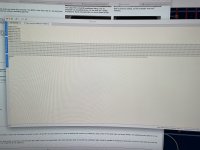
Sorry for the bad picture of the screenshot, but I think you get the idea. As a change of pace I used a real DC319 as the UART. The SBC only uses TH ICs. SMD parts are only used for the capacitors and resistors. Also I only used standard TTL logic. Byte writes are decoded properly, Power-Up is decoded and the 74HCT541 provides a defined power-up configuration and it comes with a reset button and a reset logic as well.
Cheers
Peter
Here is a picture of the recently built unit

It is still a prototype and as expected already required an ECO. But not to bad for a start. If you ask what is this cable attached to the right, this is a USB to Serial/TTL adapter that connects to the console. As the complete computer draws less than 200mA the adapter also provides power via USB. And below the output of the mandatory PDP-11/Hack test program.

Sorry for the bad picture of the screenshot, but I think you get the idea. As a change of pace I used a real DC319 as the UART. The SBC only uses TH ICs. SMD parts are only used for the capacitors and resistors. Also I only used standard TTL logic. Byte writes are decoded properly, Power-Up is decoded and the 74HCT541 provides a defined power-up configuration and it comes with a reset button and a reset logic as well.
Cheers
Peter

